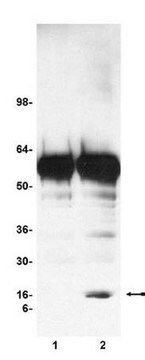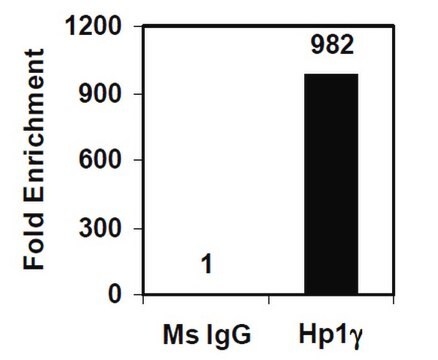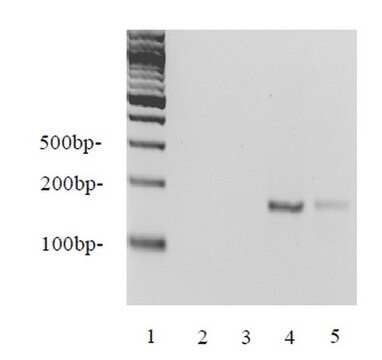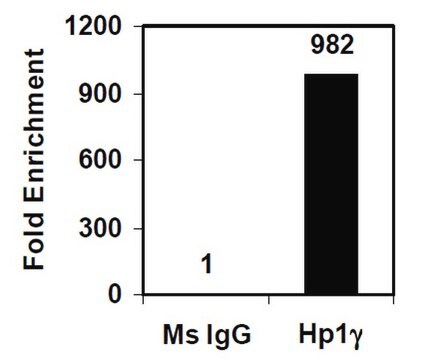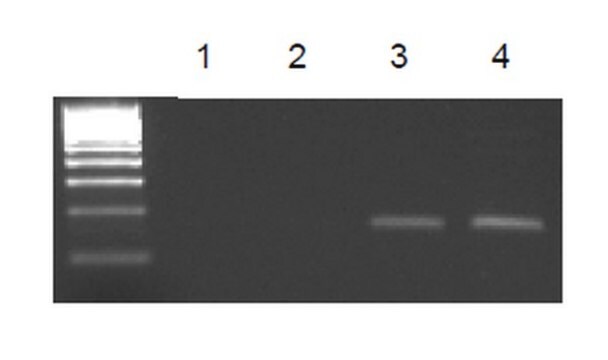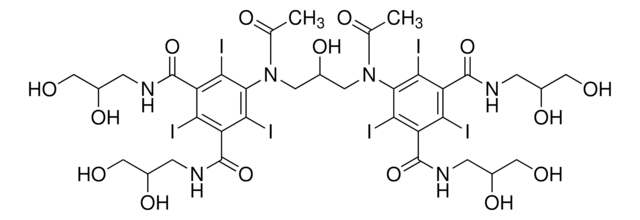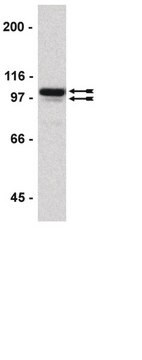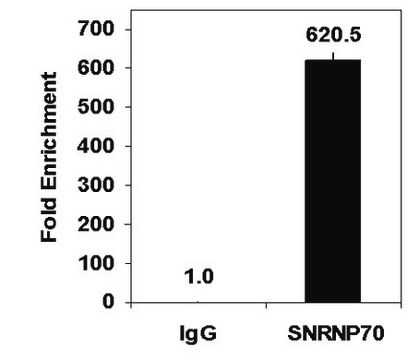17-371
EZ-ChIP
Synonim(y):
Chromatin Immunoprecipitation Kit
About This Item
Polecane produkty
opis
22 individual chromatin immunoprecipitation (ChIP) reactions using inexpensive protein G agarose beads
Poziom jakości
opakowanie
kit of 22 assay(s)
metody
immunoprecipitation (IP): suitable
Opis ogólny
Chromatin Immunoprecipitation (ChIP) is a powerful technique for mapping the in vivo distribution of proteins associated with chromosomal DNA. These proteins can be histone subunits and post-translational modifications or other chromatin associated proteins such as transcription factors, chromatin regulators, etc. Additionally, ChIP can be used to identify regions of the genome associated with these proteins, or conversely, to identify proteins associated with a particular region of the genome. ChIP methodology often involves protein-DNA and protein-protein cross-linking, fragmentation of the cross-linked chromatin, and subsequent immunoprecipitation of chromatin with an antibody specific to a target protein. The DNA fragments isolated in complex with the target protein can be identified by a variety of methods including PCR, DNA microarray and DNA sequencing. Standard or quantitative PCR can be performed to verify whether a particular DNA sequence (the gene or region of the genome) is associated with the protein of interest. The combination of ChIP and promoter or genomic tiling microarrays (ChIP-chip) allows genome-wide identification of DNA-binding sites for chromatin-associated proteins with precise resolution. Alternatively, high-throughput sequencing of libraries constructed from immunoprecipitated chromosomal DNA (ChIP-Seq) is a powerful alternative to ChIP-chip in mapping the protein-DNA interactions across mammalian genomes.
Cechy i korzyści
- Easier: Spin columns make DNA purification easier and more reliable - no more messy phenol-chloroform extractions.
- Quicker: All reagents to process your samples are included - you don′t have to spend valuable time making them.
- Greater Reproducibility: Positive and negative control antibodies and PCR primers are included to help validate your results and to troubleshoot your experiments.
Opakowanie
Komponenty
- DNA Purification Spin Columns and Collection Tubes
- ChIP Blocked Protein G Agarose
- Anti-RNA Polymerase II
- Control PCR Primers
- Normal Mouse IgG
- Bind, Wash and Elution Reagents
- Protease Inhibitor Cocktail II
- RNase A
- Proteinase K
- All required buffers
- ChIP Dilution Buffer
- Low Salt Immune Complex Wash Buffer
- High Salt Immune Complex Wash Buffer
- LiCl Immune Complex Wash Buffer
- TE Buffer
- 0.5M EDTA
- 5M NaCl
- SDS Lysis Buffer
- 1M Tris-HCl, pH 6.5
- 10X PBS
- 10X Glycine
- 1M NaHCO3
- Control Primers
- 20% SDS
- Spin Filters
- Collection Tubes
- Bind Reagent A
- Wash Reagent B
- Elution Reagent C
Przechowywanie i stabilność
Oświadczenie o zrzeczeniu się odpowiedzialności
Hasło ostrzegawcze
Danger
Zwroty wskazujące rodzaj zagrożenia
Zwroty wskazujące środki ostrożności
Klasyfikacja zagrożeń
Acute Tox. 4 Oral - Aquatic Chronic 3 - Eye Dam. 1 - Flam. Liq. 2 - Resp. Sens. 1 - Skin Irrit. 2
Kod klasy składowania
3 - Flammable liquids
Klasa zagrożenia wodnego (WGK)
WGK 2
Temperatura zapłonu (°F)
55.4 °F
Temperatura zapłonu (°C)
13 °C
Certyfikaty analizy (CoA)
Poszukaj Certyfikaty analizy (CoA), wpisując numer partii/serii produktów. Numery serii i partii można znaleźć na etykiecie produktu po słowach „seria” lub „partia”.
Masz już ten produkt?
Dokumenty związane z niedawno zakupionymi produktami zostały zamieszczone w Bibliotece dokumentów.
Nasz zespół naukowców ma doświadczenie we wszystkich obszarach badań, w tym w naukach przyrodniczych, materiałoznawstwie, syntezie chemicznej, chromatografii, analityce i wielu innych dziedzinach.
Skontaktuj się z zespołem ds. pomocy technicznej